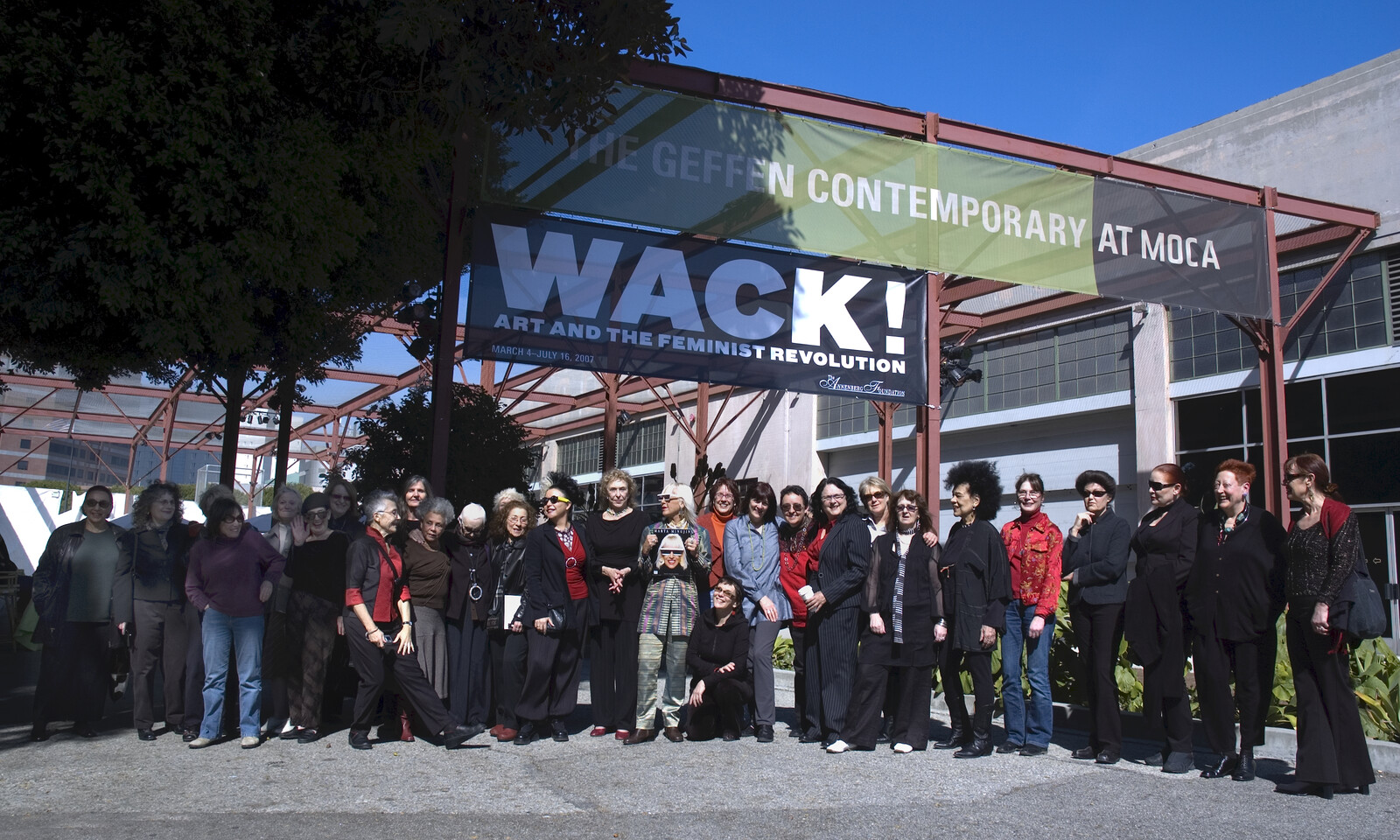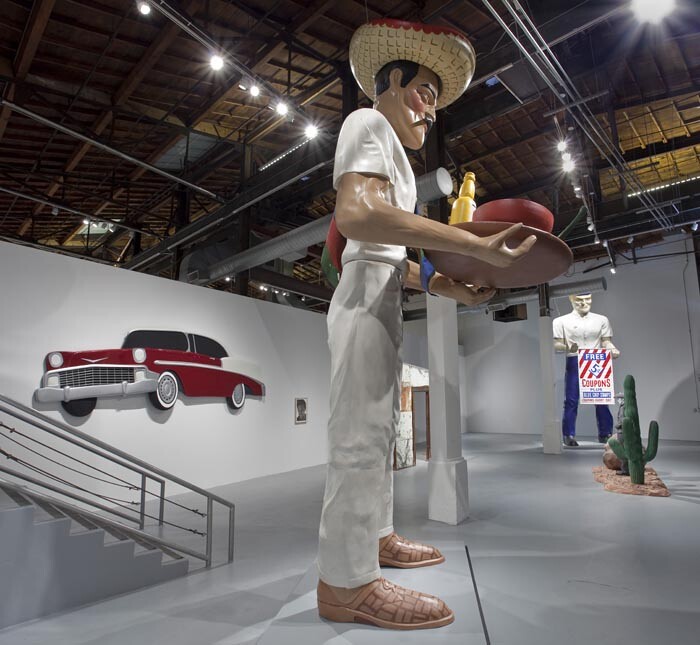Categories
Subjects
Authors
Artists
Venues
Locations
Calendar
Filter
Done
December 18, 2023 – Review
Paul Pfeiffer’s “Prologue to the Story of the Birth of Freedom”
Juliana Halpert

Trying to find a critical entry point into—or exit from—Paul Pfeiffer’s retrospective is not unlike the challenge of navigating its labyrinthine layout of walls, ramps, and rooms within rooms. An architecture designed by the artist with Hollywood sound stages in mind slowly unveils a spectacle of spectacles, showcasing over thirty works spanning the past twenty-five years and dizzying ranges of scale, duration, material, and method. Pfeiffer is best known for his bite-sized video works, which sit here alongside extra-large installations, miniature dioramas, full-scale sculptures, room-wide projections, and expansive photo series. Video durations range from four seconds to ninety days. Most of his moving-image works have no sound, but the space hums with the distant, ambient clamor of a crowd. Michael Jackson’s voice has been replaced by that of a Filipino choir. The Stanley Cup levitates in mid-air. Marilyn Monroe and Muhammad Ali have been scrubbed out of their respective beaches and boxing ring. Raucous activity and haunting absence somehow go hand-in-hand.
If there’s a true North to Pfeiffer’s practice, it might be mass media’s protean relationship to consumer technology, how the latter shapes the former and vice versa. It’s a marvel to witness the artist’s use and abuse of both, …
June 7, 2022 – Review
Pipilotti Rist’s “Big Heartedness, Be My Neighbor”
Terry R. Myers

“Stay home.” Where or when does comfort become confinement? Pipilotti Rist’s exhibition in MOCA’s Geffen Contemporary warehouse invites us to take an entertaining, even rejuvenating stroll through Rist’s “neighborhood,” a place provocatively split in two, where the bodies on screens present little to no risk and plenty of reward.
As a survey of Rist’s substantial production from 1986 to the present, “Big Heartedness, Be My Neighbor” sets out to achieve the kind of wish-fulfilment its title proposes. Moving from the entrance past a theatrical curtain into the exhibition, the neighborhood is suddenly there below—we enter from slightly above—all at once a stage set and an apparition, aglow with colorful imagery moving across the walls of its buildings and the communal grounds surrounding them, caught in the middle of a kind of pre-performance begun before we even arrived. (Or, more likely, a sequence that neither starts nor stops, just exists.) There are also sounds, voices even. At first they seem to be over … there, beckoning from the housing or near the picnic tables in a park, but then, there she is, that small mirage and small voice crying out at your feet.
What to do here with one of Rist’s …
February 8, 2021 – Feature
“WACK! Art and the Feminist Revolution”
Wendy Vogel

The Rearview series addresses blind spots in contemporary art history by returning to an influential exhibition, work, or text from the past and reflecting on its relevance to the present. In this edition, Wendy Vogel considers how the 2007 touring exhibition “WACK! Art and the Feminist Revolution” marked a generational shift in art criticism.
Feminist art history may come to be defined as the era before and after WACK!. The onomatopoeic word—more a metaphorical whip-crack than a line in the sand—is shorthand for “WACK! Art and the Feminist Revolution,” an exhibition curated by Cornelia Butler that opened at the Museum of Contemporary Art, Los Angeles (MOCA) in March 2007. This pioneering institutional survey of feminist art brought together work made by more than 120 female artists and collectives between 1965 and 1980. In the introduction to the 500-plus-page exhibition catalogue, Butler stated her curatorial goals: “My ambition for ‘WACK!’ is to make the case that feminism’s impact on art of the 1970s constitutes the most influential international ‘movement’ of any during the postwar period—in spite or perhaps because of the fact that it never cohered, formally or critically, into a movement.” It remains a bold statement today; it was …
September 20, 2010 – Review
"Dennis Hopper Double Standard, " MOCA, Los Angeles
Tyler Coburn

Shameless nepotism or inspired programming? It’s hardly a surprise that Jeffrey Deitch’s first exhibition at the Geffen Contemporary at MOCA would set critics atwitter, regardless of the subject, but watchdog fingers started wagging double-time with April’s news of a planned survey of the work of Dennis Hopper. Rushed by Deitch due to Hopper’s then-ailing condition (he passed away in May), the exhibition drew early concern, as Hopper was a collector of the work of exhibition curator Julian Schnabel; an actor in his film Basquiat; and the subject of one of his plate paintings. Deitch claimed to own the works of neither (“I have zero commercial involvement in this,” he told The Los Angeles Times), though as Steve Kaplan described on post.thing.net, it nonetheless “feels like an extension of the titillating, fame-obsessed, outré projects that often dominated his NY galleries.” If this is the case, then Deitch has simply adapted this one-man show for his new city, courting the celebrities, the crowds, and the culturati through Hopper’s unusual toeing of Hollywood and the art world. The only lingering question is whether Hopper’s art merits more than the industry chatter.
“Dennis Hopper Double Standard” comprises over two hundred works in various media that …